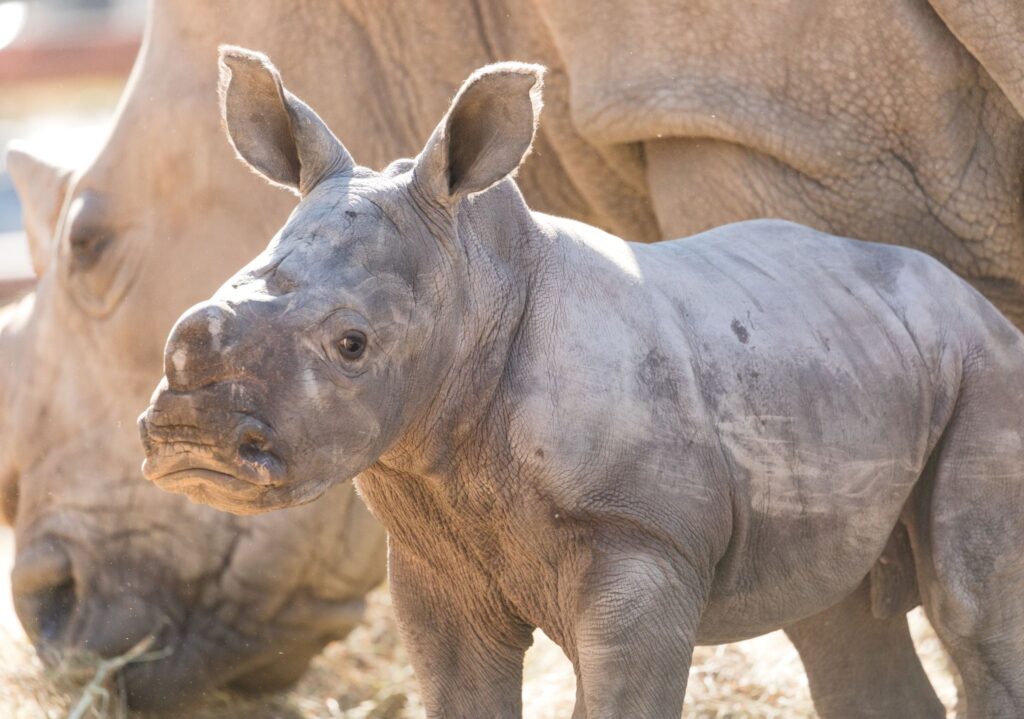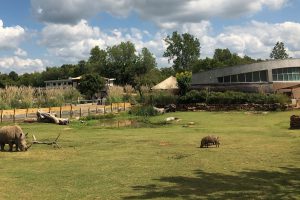The Mary K. Chapman Rhino Reserve is home to white rhinos, warthogs, sitatungas, springbok and African crowned cranes. This naturalistic home features many sustainable elements such as straw bale walls, a green roof and a cistern, which harvests rainwater. Additionally, this habitat features indoor and outdoor viewing areas, allowing guests to view our rhinos any time of the year. The Mary K. Chapman Rhino Reserve is an example of a successful pairing of public and private dollars to improve the experience for our guests and our animal staff responsible for the direct care of the species.
The Mary K. Chapman Rhino Reserve was designed to provide a space to care for new animals before they transition onto the main outdoor, multispecies habitat. This design provides zookeepers with increased flexibility to section off parts of the nearly 7,000-square-foot barn to accommodate animals at different times, to monitor their health and wellbeing before introducing them to the exhibit and its current residents.
Meet Hodari

Hodari is the first Southern white rhinoceros born at our zoo. Hodari weighed 127 pounds at birth and in two years has grown to 1,925 pounds! Hodari (pronounced Ha-Dar-ee) is a Swahili name meaning brave or courageous. The name was selected by the trustees of Chapman Foundations Management, LLC, whose donation made the Mary K. Chapman Rhino Reserve possible. Our zoo’s rhino crash, a term used to describe a group of rhinos, also includes mom Sally and male Rudo. They are important ambassadors for their species, giving guests an opportunity to see rhinos up close and learn about the threats they face.
Why Rhino Conservation Matters
An estimated 20,000 white rhinoceroses remain in the wild, but the populations of all five species continue to dwindle at an alarming rate due to poaching. The Tulsa Zoo supports the International Rhino Foundation’s program, Stop Poaching Now, which works to reduce the supply and demand of rhinoceros horns.
The largest species of land mammal after the elephants, the white rhino is native to Africa. Of the two distinct subspecies of white rhinos, only populations of the Southern white rhino remain in the wild. The Northern white rhino is extinct in the wild due to poaching; only two females remain in human care, on Ol Pejeta Conservancy in Kenya.

